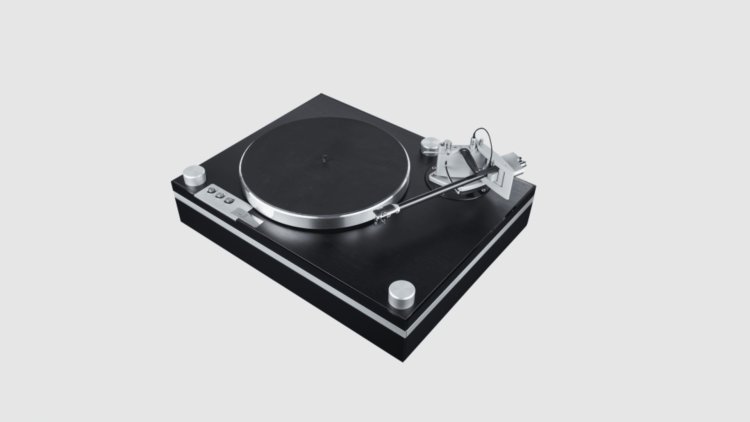Sophisticated Thiele TT01 record player

Helmut Thiele, the guy behind it, has been responsible for numerous highly acclaimed devices over the last three decades and designed for recognized brands such as Acapella, Tannoy, Marantz, Pioneer, Vincent, and many more, but he is only known to a few insiders among hi-fi lovers.
He fitted the arm with an ultra-stable double-walled carbon tube that is also damped by a two-component gel. Together with the headshell, which is covered in ebony to reduce resonance, this results in an effective weight of roughly 14 grams, which is compatible with virtually all current cartridges.
Tracking the record works reliably in every situation, thanks to the leveraging effect the needle tip has on the already incredibly smooth-running bearings.
Let's take a closer look at the chassis, which is 51 centimeters broad and supported by three height-adjustable spikes. We then discover that it is a three-layer construction using the "Constrained Layer Damping" approach, which involves using distinct hardwood boards that are glued together to mechanically isolate the working components. Thiele spent a long time figuring out the best combination for them.
The lowest layer contains the synchronous motor, which is chosen for its silent operation and consequently has no direct connection to the platter bearing. The arm base rests on the middle plate, while the latter is lodged in the upper layer.
With this design, Thiele offers the least amount of noise possible. To show the efficacy of his method, the creator drops the probe of a highly sensitive stethophone onto the middle of the spinning platter, with any sounds amplified and amplified onto accompanying headphones.
Except for the hum of the internal amplifier, the headphones were completely silent. This was also believed to be due in part to the plate mat being made of a dampening PVC foam.
Such effects, or their absence, are arguably more difficult to discern during actual listening because they are more or less integrated into the music stream.
It should be observed at this time that the "Zero Tracking Error Turntable" sounds plainly clean, straightforward, and tidy, but with no touch of sterility. The act simply comes along too fragrantly, breathing and shimmeringly for that.
The turntable, which weighs roughly 19 kilos, achieved this by not only transmitting the vibrant opener's stirring drive and the heated, concentrated concert environment but also by displaying the entire event in abundance in every direction.
It brightened the audio structures of this song by collaborating with top Ortofon cartridges such as Windfeld Ti Heritage or Verismo – which we just recognized as a reference – Despite its speed, it is captured with tremendous distinctiveness, and its most delicate echoes or tiniest tone refinements are highlighted in a very deep way.
The manufacturer, situated in the Western German city of Duisburg, achieved the machine's balance between calm forward propulsion and invigorating tranquility, among other things, by drilling a 2.5-mm hole in the middle of the self-centering bearing mirror, through which the seven-millimeter ceramic ball runs.
This produces a modest and even braking torque, allowing the motor to run more smoothly and preventing wobbling effects at medium speeds. The use of a viscous special lubricant rather than oil for the 10-mm axle supports this strategy. Overall, this demonstrates the experience as well as the attention to detail contained here.
The two speeds, which are set via lit buttons, can be accurately adjusted in the range of roughly plus/minus 5%, ensuring that the tempo and hence the pitch are always absolutely correct.
Two small potentiometers are positioned on the back adjacent to the input for the external PSU, from which the turntable takes power. Instead of a switching power supply, that unit is an "analog" variant given to the TT01 by electronics engineer Walter Fuchs. The latter is popular today because of their efficiency, but they are also criticized because of their dispersing behavior.
The connecting panel with XLR outputs can be found on the other end of the back wall. This, of course, limits the cartridge selections to MC models, which is appropriate given the turntable's price and level of performance. Helmut Thiele is a firm believer in the benefits of balanced signal processing.
This is reserved for MC pickups, but it also necessitates a properly equipped phono preamp. No problem for our Brinkmann Edison MKII, which has XLR as well as RCA inputs. Adapters must be used otherwise, or Thiele must add RCA jacks as an alternative. Even so, the German turntable should play more correctly.





























